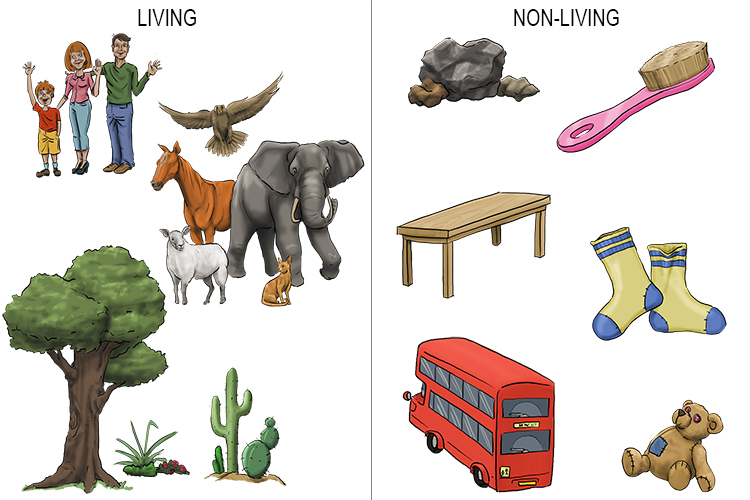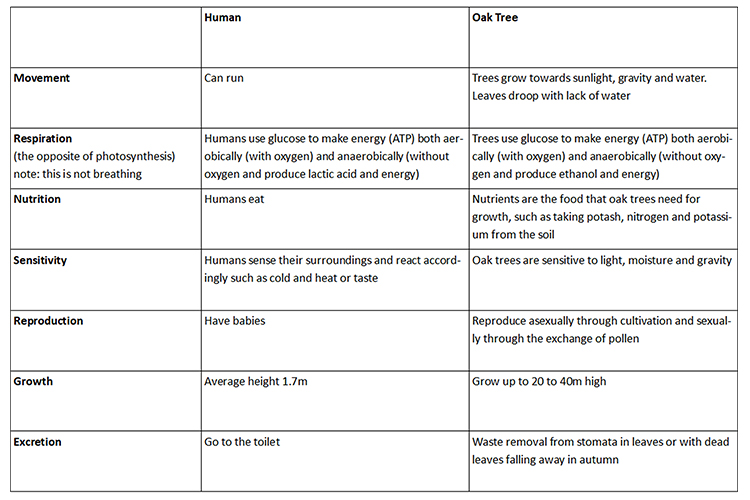Summary of living things

Living things, described as alive, must perform several vital activities: movement, respiration, nutrition, sensitivity, reproduction, growth and excretion.
All living things are classified into groups called kingdoms.
As an example, we know humans are alive, but trees are alive too:





